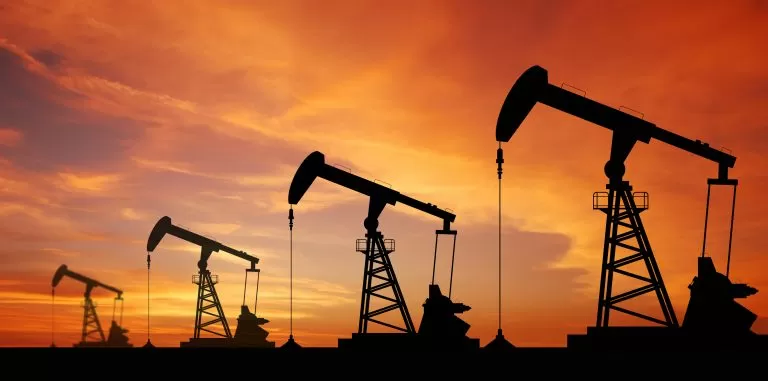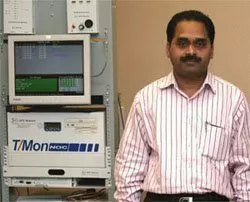Check out our White Paper Series!
A complete library of helpful advice and survival guides for every aspect of system monitoring and control.
1-800-693-0351
Have a specific question? Ask our team of expert engineers and get a specific answer!
Sign up for the next DPS Factory Training!

Whether you're new to our equipment or you've used it for years, DPS factory training is the best way to get more from your monitoring.
Reserve Your Seat TodayIn the Oil & Gas industry, SCADA (Supervisory Control and Data Acquisition) systems ensure real-time monitoring and control.

SCADA allows you to remotely monitor, control, and collect data, making it easier to repeat processes efficiently, such as:
You also become safety code compliant with your regional standards.
SCADA can directly help you with:
SCADA systems are as good as the manufacturer that provides you with them.
The downstream process in oil and natural gas production refers to refining, processing, and distributing.
This means that it is a process that goes from the field all the way to the supply chain.
The universal remote control and monitoring that you get with SCADA ensures streamlining, safety, and efficiency.
In SCADA, there are multiple products including the RTU (Remote Telemetry Unit), Programmable Logic Controllers (PLCs), Master Stations.
Other detection equipment that includes:
RTUs can monitor your sensors if they output discrete and analog signals.
You can install your RTU in remote locations to remotely monitor data, sending it back to your master station.
You can establish remote control functions to save you and your employees time and money to go press a button or flip a switch.
In the crude oil and natural gas industry, industrial automation leads to you having multiple remote terminal units (RTUs). Centralizing your monitoring equipment at your remote sites helps you to:
Polling Master Stations are crucial in the oil and gas industry. They immediately alert you if a monitoring device at a remote site has malfunctioned.
Oil & gas workover is maintenance to restore, repair, and upgrade both your production capabilities and controlling equipment.
Real-time monitoring sends you data that allows you to evaluate your well's performance and maintenance status.
Monitoring achieves the following:
By monitoring this data, you can promptly notice issues that require maintenance. This includes production rates declining or downhole equipment failures.
Downhole equipment failures are the malfunctions that happen in equipment installed down a well hole.
Common downhole failures are the following:
These equipment failures are easily preventable with equipment from a SCADA system manufacturer that has experience in the industry.
Manufacturers that offer integration and customization ensure future expansion and backwards integration.
DPS manufactures SCADA systems for multiple industries. This includes the oil & gas production industry.
One of our most notable clients are Kuwait national petroleum Company (KNPC), one of the biggest refineries world-wide.
They distribute petroleum products all over the world, so a properly functioning communication system is crucial for them.
KNPC sought us out after a rectifier failed at one of their remote sites.
"Normally the power doesn't fail here. It was an unmanned station, the power failed and all the batteries were drained completely. We didn't know that." - Ravipati Seetaramaiah

They had 9 remote sites that needed monitoring. DPS helped KNPC deploy a dual-redundant system configuration.
It consisted of redundant T/MON Slim Master Stations incase a hardware failure occurs on the main master station.
We also helped KNPC deploy nine NetGuardian 832A RTUs at each remote monitoring site. This came equipped with 16 analog inputs per RTU and 48 digital expansion units.
DPS Telecom can help you achieve real-time monitoring and control. Without a SCADA system, you may face challenges in monitoring and controlling your oil and gas wells.
You don't have to put up with inefficiencies. At DPS we equip you with customized monitoring configurations that make sure you have supervision and control over process.
Manual data analysis is a thing of the past. DPS Telecom's SCADA system and upcoming AI integrations equip you with data and presentations. This will help you predict maintenance schedules, and prevent malfunctions before they happen.
When you become a client with DPS, safety and compliance won't even be on your mind. Our monitoring equipment comes with in-depth documentation that helps you stay within your national and regional compliance standards.
Integrate forwards and backwards with DPS Telecom. We offer you customized monitoring on all 3 levels including:
If you have have similar applications or unanswered questions please contact me and I will be happy to help.
Even if we can't find a solution together, I will do my best to point you in the right direction.
Call at 1-800-693-0351 or E-mail at sales@dpstele.com

Ziad Alezabi
Ziad Alezabi is a Application Documentarian at DPS Telecom. He reviews successful DPS client projects and reports on the best practices that you can use to successfully reach your own project goals.